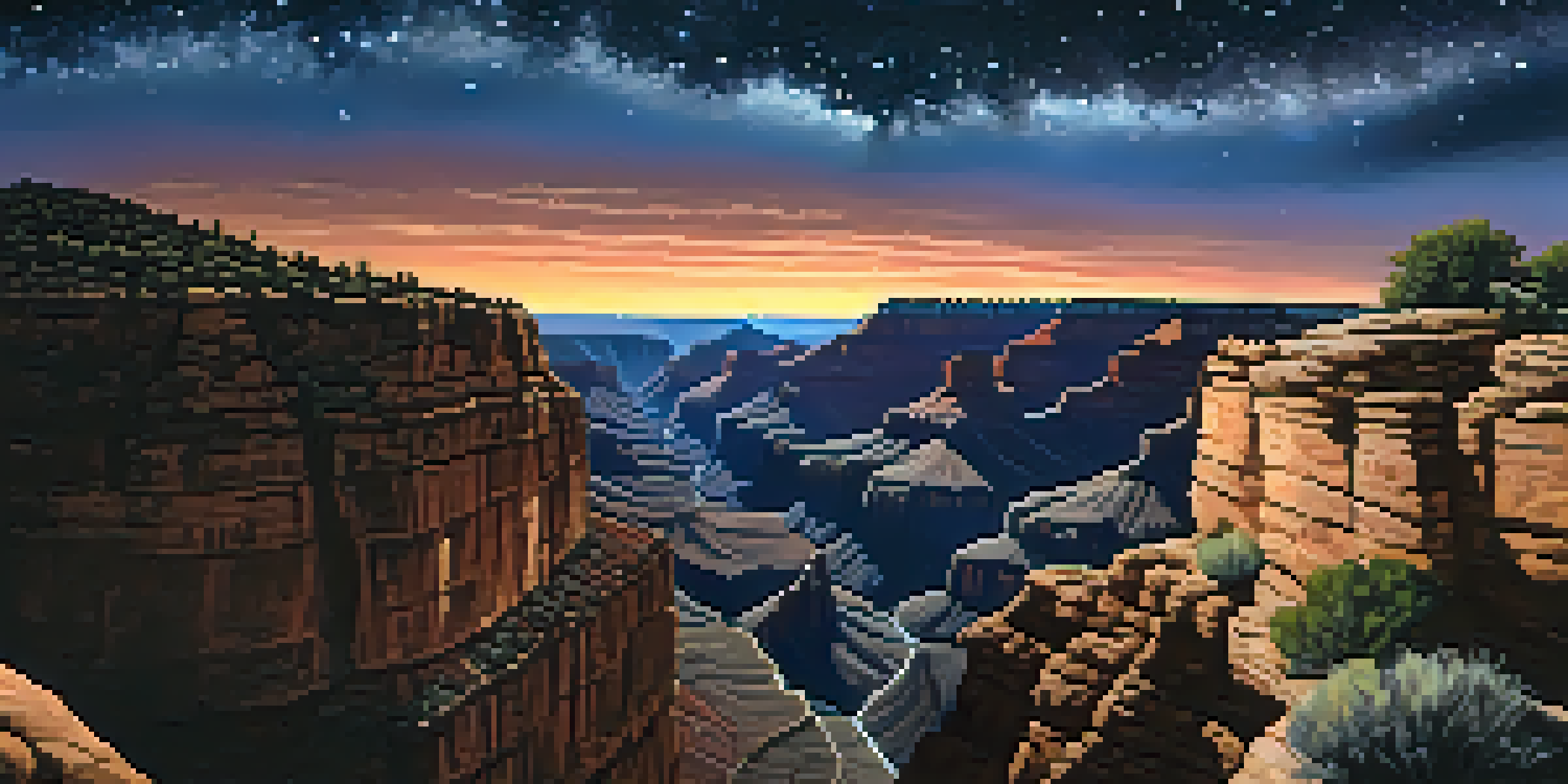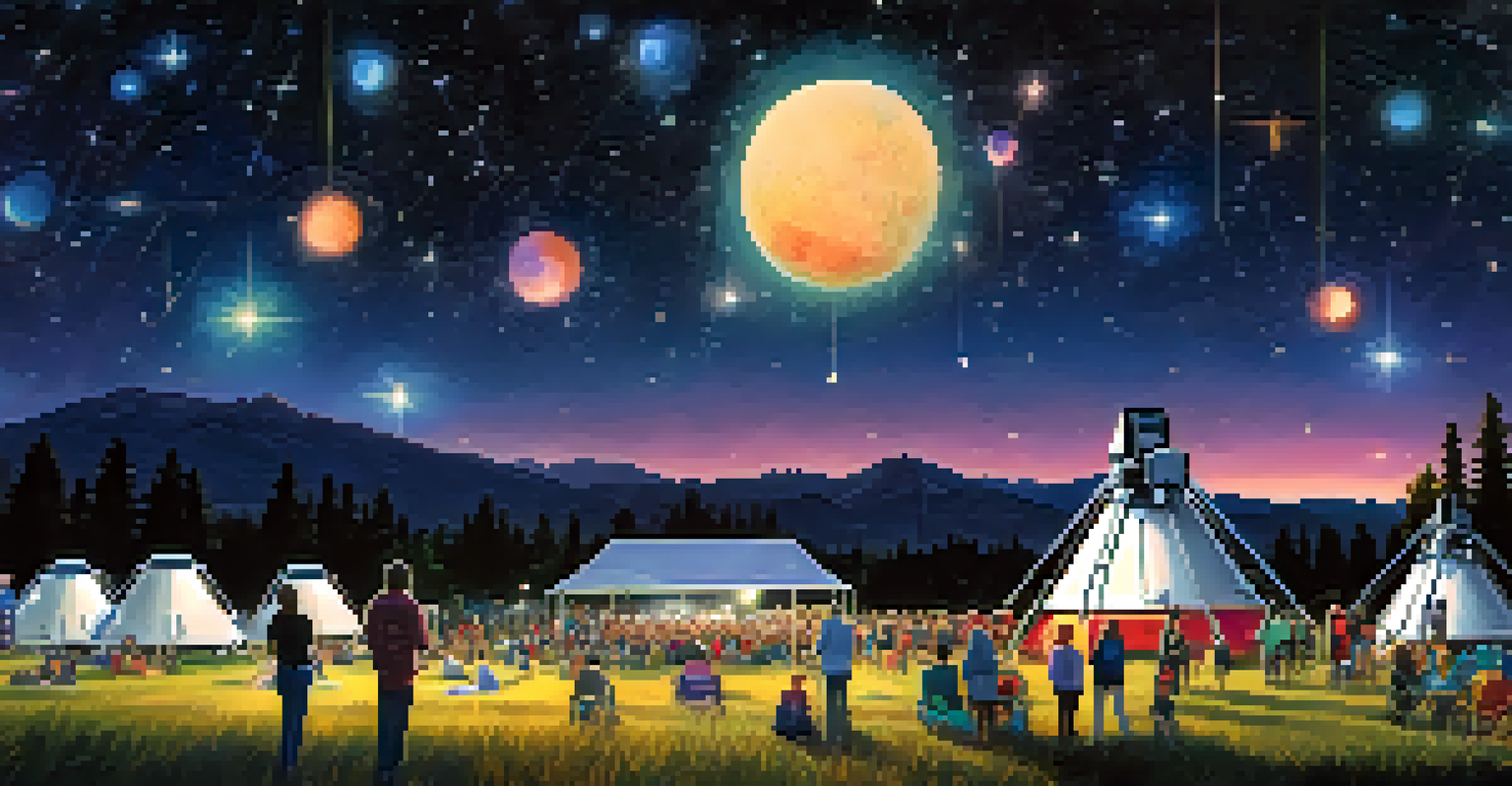Exploring Arizona's Dark Skies: A Stargazer's Paradise

Why Arizona is a Stargazer's Dream Destination
Arizona is renowned for its clear, dark skies, making it a haven for stargazers. With minimal light pollution in many areas, the state offers breathtaking views of the Milky Way and countless constellations. This unique feature attracts both amateur astronomers and seasoned stargazers looking to escape city lights.
The stars are not just the lights in the sky; they are the memories of our ancestors, the dreams of our future, and the hope that unites us all.
Imagine lying on a blanket under a sky so vast that it feels like a blanket of diamonds. Whether you’re in the deserts or the mountains, Arizona's elevation enhances the visibility of celestial bodies. It's a place where you can truly connect with the universe.
Moreover, Arizona's climate plays a crucial role in stargazing. With over 300 sunny days a year, the chances of clear night skies are significantly high. That means more opportunities for you to gaze up at the stars!
Top Dark Sky Locations in Arizona
Some of the best spots for stargazing in Arizona include the Grand Canyon, Sedona, and Flagstaff. Each location offers unique landscapes and perspectives of the night sky. For instance, the Grand Canyon not only provides stunning views during the day but transforms into a celestial wonderland after sunset.

Sedona is famous for its red rocks and vortex sites, which can create an enchanting backdrop for stargazing. The contrast between the dark sky and the illuminated rock formations adds an extra layer of magic to your experience.
Arizona's Clear Skies for Stargazing
Arizona's dark skies and minimal light pollution make it an ideal destination for both amateur and seasoned stargazers.
Flagstaff, designated as an International Dark Sky City, is committed to preserving its dark skies. With numerous observatories, it’s a fantastic place to learn more about astronomy while enjoying the beauty above.
Best Times to Stargaze in Arizona
While Arizona boasts year-round stargazing opportunities, certain times are particularly magical. The months of spring and fall are often recommended due to their mild temperatures and generally clear skies. These seasons provide comfortable evenings for lying back and enjoying the cosmos.
To confine our attention to terrestrial matters would be to limit the human spirit.
Additionally, specific celestial events, such as meteor showers or planetary alignments, can enhance your stargazing experience. Events like the Perseids in August or the Geminids in December attract many enthusiasts eager to witness spectacular shooting stars.
Remember, the moon phase also plays a role in stargazing. A new moon offers darker skies, making it easier to see fainter stars and galaxies. Planning your stargazing trips around these lunar cycles can significantly elevate your experience.
Essential Gear for Stargazing
While you can enjoy stargazing with just your eyes, having the right gear can enhance your experience. A good pair of binoculars or a telescope can help you see celestial details that are otherwise invisible. For beginners, binoculars are often a great starting point, offering a wider field of view.
In addition to viewing equipment, consider bringing a star map or a stargazing app on your smartphone. These tools can help you identify constellations and planets, turning your stargazing adventure into an educational experience.
Top Stargazing Locations
Key spots like the Grand Canyon, Sedona, and Flagstaff offer unique experiences and breathtaking views of the night sky.
Finally, don’t forget to pack some comfort items. A cozy blanket, snacks, and perhaps a thermos of hot cocoa can transform your night under the stars into a delightful outing with friends or family.
Respecting the Night Sky
As you immerse yourself in the beauty of Arizona's night sky, it's essential to remember the importance of preserving these dark spaces. Light pollution has become a significant threat to stargazing, and being mindful of our actions can help maintain these pristine environments.
When visiting dark sky locations, follow guidelines set by local authorities to minimize light pollution. Use red flashlights instead of white ones, and avoid using your phone's screen as much as possible. These small changes can make a big difference in maintaining the natural beauty of the night sky.
Additionally, consider participating in local conservation efforts aimed at protecting dark skies. Many communities host events and educational programs to raise awareness about the importance of preserving these areas for future generations.
Stargazing Events and Festivals in Arizona
Arizona hosts several stargazing events and festivals throughout the year, bringing together enthusiasts and experts alike. One of the most notable is the annual Flagstaff Dark Sky Festival, which features lectures, workshops, and telescope viewings. It’s a great opportunity to learn from astronomers and connect with fellow stargazing fans.
Another popular event is the Sedona Star Party, which showcases the beauty of the stars against the stunning red rock backdrop. Participants can enjoy guided stargazing sessions and family-friendly activities that make astronomy accessible to all ages.
Events Enhance Stargazing Experience
Annual events like the Flagstaff Dark Sky Festival and Sedona Star Party provide opportunities to learn and connect with fellow stargazers.
These events not only enhance your stargazing experience but also foster a community of star lovers. It's a chance to share your passion for the cosmos and maybe even make a few friends along the way!
Capturing the Night Sky: Photography Tips
If you want to take your stargazing experience to the next level, consider capturing the beauty of the night sky through photography. A good camera with manual settings, along with a sturdy tripod, can help you capture stunning images of the stars and Milky Way. Long exposure shots can create mesmerizing effects, turning the sky into a canvas of light.
Experimenting with different settings and angles can yield unique results. Play with exposure times, ISO levels, and focus to find what works best for your vision. Remember, practice makes perfect, so don’t hesitate to try different techniques during your stargazing outings.

Lastly, don’t forget to enjoy the moment! While capturing memories is important, take time to simply gaze at the stars and soak in the experience. The beauty of the night sky is a reminder of the vastness of the universe, inspiring awe and wonder.